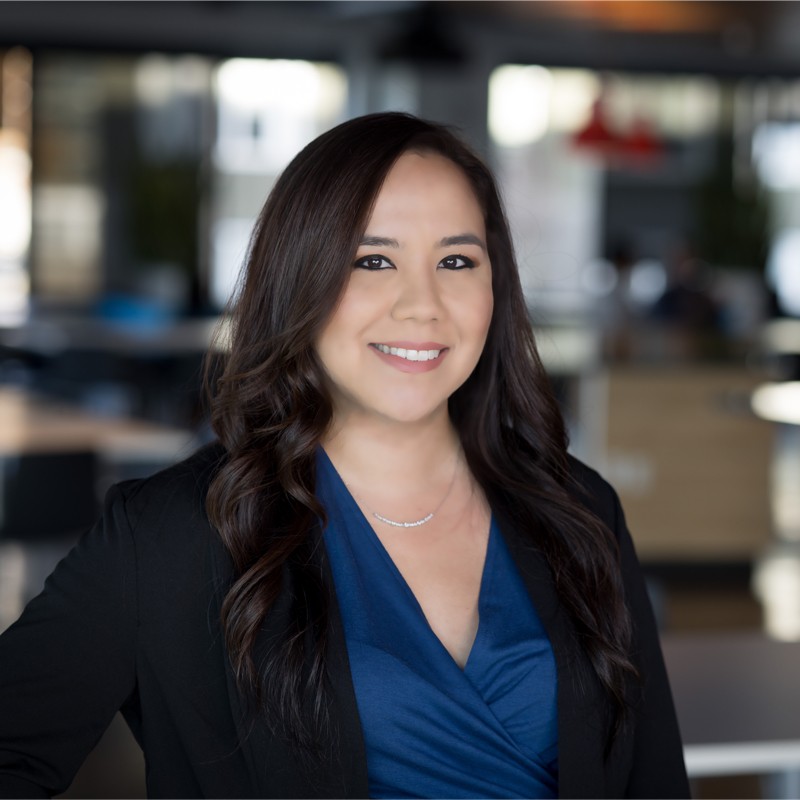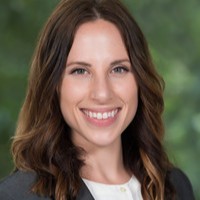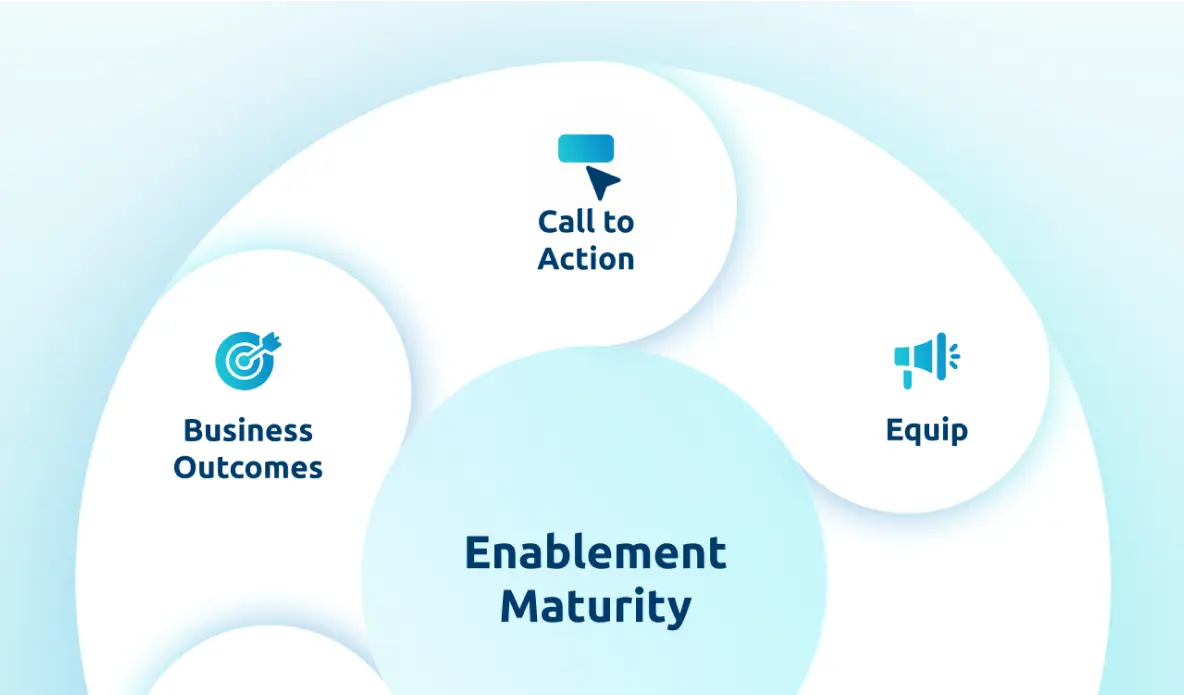According to the State of Sales Enablement Report 2024, those who leverage technology to power sales training are 50% more likely to improve quota attainment. So how can you enhance training efficiency and boost rep productivity with a unified platform?
Shawnna Sumaoang: Hi, and welcome to the Win-Win podcast. I am your host, Shawnna Sumaoang. Join us as we dive into changing trends in the workplace and how to navigate them successfully.
Here to discuss this topic is Amanda Steiner, the director of sales enablement and training at McKesson. Thanks for joining us, Amanda. I’d love for you to tell us about yourself, your background, and your role.
Amanda Steiner: Thank you so much for having me. This is so exciting. So a little bit about me. I’ve been with McKesson for just under eight years now. Came into the organization initially as a part of the inside sales team. Loved it, had a great time, eventually moved out to the field and then became a people leader in the sales force.
And as I was an individual contributor in this organization, I began to observe a lot of trends that were occurring even outside of my business unit that I think lent itself to opportunities for even an org of our size. To think more strategically about how we’re asking reps to spend their time in order for them to be more successful.
And that was sort of the tip of the iceberg, but that drove my interest in enablement and training in general. I happen to have a background in education as far as my schooling. So I thought this was a nice cross-section of interests for me, but have since been leading our sales enablement and training organization for our pharmaceuticals division for McKesson for the last year and a half.
SS: Amazing. Well, I know that you’ve also spent, I believe, the majority of your career in the healthcare industry, both in the sales and sales enablement space. Given that experience, what are some of the unique challenges that you would say reps in the healthcare industry face, and how can enablement help overcome those?
AS: Healthcare is a very challenging industry. It’s ever-changing. It requires more than just a deep knowledge of the products that you’re selling in the market. It requires a well-rounded understanding of the entire healthcare ecosystem. So, From manufacturer to distributor, to provider, to patient, and all the financial and compliance considerations throughout.
That means our sellers are really challenged to be, at any given time, well-informed, agile, and have excellent consultative techniques in their sales approach. So, their tools, resources, and support teams have to be able to rise to meet those challenges. So a strong enablement strategy is a must. If successfully pulled through, enablement’s going to provide the structure, governance, data insights, and innovation that you need in this kind of complex environment to keep sellers informed, marching to the beat of the same drum, and used to continuous learning Overburdening their mindshare.
I know that’s a problem for a lot of us in healthcare because there is a change, not just quarterly, not just monthly, but almost daily. And we’re throwing so many things at reps that are in the position of informant to their customers and advocates to their customers as much as they are maintaining the sales relationship.
So it’s very challenging, but I am super confident that enablement is the answer even for an organization of this size and complexity.
SS: I could not agree more. And Mikesa, you’re responsible for helping with a lot of that continuous learning, including developing and managing the training programs. In your view, what are some of the key building blocks for an effective training program?
AS: It’s such a good question. And it’s something that I hear enablers and trainers talk a lot about. But the one thing that I think we can all agree on is there is an old adage in the writing world that you should always begin with the ending in mind. And the same concept applies when you’re building a training program.
You can’t manage what you don’t measure. And if you’re not painfully specific about the problems you’re looking to solve, whether it is behavioral, whether it’s tactical, or data-driven, then you’re very seldom going to be able to truly address the problem, and it will just be a superficial solution.
I also really recommend having a mixture of KPIs. I think one thing that enablement and training organizations struggle with is telling the story of our impact on the org. Because we’re a nonrevenue generating organization, we have to be able at any given time to tell that story. So the best way to do that is to make sure that you are not only measuring a moment in time where you deliver training and you can look at the sales target results from that date.
But you should also be measuring and observing behavioral skills, selling skills, how these things over time have changed in correlation to moments in time when you made process changes, where you implemented training, and you can tell a story around multiple KPIs. I think the last note I’ll make is don’t just check the box on evaluation.
Make sure that the way you’re measuring is as targeted as what you’re measuring. So in our organization, we’ve changed our approach on this to requiring teachbacks for tactical knowledge, things like sales process, things like, do you know how to log this thing over here, rather than always defaulting to assessment style evaluation.
We also require role plays and stand and delivers for selling skills and this might come as a surprise to some of the listeners, but we hadn’t previously been very intentional about our evaluation mechanism. So, don’t check the box on that. Make sure that you’re thoughtful in how you’re choosing to evaluate the work that you’re putting out into the world.
To really be confident that the sales reps are going to be ready to go as soon as you’re done with that effort.
SS: I think that is phenomenal advice in terms of kind of the foundational building blocks. I’m curious, what did training look like at your organization before you started leveraging Highspot and how has it evolved since then?
AS: I would say that we needed a lot of help with organization of efforts and particularly With making sure that our reps were not overburdened with information in dozens of places, which is where we started. And I think what we’re still working from, as you can imagine, is that takes a lot of time in internal collaboration and intention to get to a point where your points of origin for a sales rep are greatly reduced.
I would say that for McKesson, where we started was with multiple business units that operate in very siloed ways. And I think that’s still a struggle for us and a struggle that I think many of your listeners particularly large organizations can relate to. But we didn’t have a common environment for content management that integrated with the CRM that also enabled us to get real-time data on how reps were interacting with this content, consuming it, and sharing it with customers.
So we just did not have any kind of closed-loop system. to justify our efforts and also form a more strategic collaborative strategy with marketing, with strategy, with operations. So I would say before Highspot, there was a lot of throwing things at the wall and hoping something stuck. Now, we’re still in the phase of building our critical infrastructure for the business around it, but I am super optimistic based on what we’ve seen already.
This is going to provide a launch pad for us. That’s not only promoting our digital literacy in the sales world, especially now that we’re in a much more virtual selling environment but is also going to create the foundation for our support teams, as well as our sellers to sell more intelligently, which I know is what we’re all striving for.
If you don’t have a good infrastructure, you don’t have good data. You don’t make informed decisions.
SS: I love that philosophy and approach. I think that is some very sound advice on the topic of challenges. What would you say are some of the common pitfalls that organizations might encounter when they’re developing training programs and do you have any advice on how they can avoid them?
AS: Yes, too quickly jumping to solutioning. I think that’s something that we all do when we’re super excited to fix a problem. The thing that gets in the way, of course, is ego. We all want to solve the problem and think based on our experience, we have the answer. So we get excited about it, but. What you’ll see, of course, is, uh, you end up in a position where you haven’t really gotten to the bottom of what are driving the surface concerns that you’ve been made aware of.
And a lot of the time, You’re going to hear things like, it’s a selling skills issue. They need objection-handling workshops. They need help with our value propositioning. And sometimes that’s true. Sometimes it’s true that it’s a mixture of things. But my question to the listeners would be, do you have a sales methodology problem or do you have a sales process problem?
And if you’re not confident in what you’re hearing and its root cause, don’t begin to solution until you get to the bottom of it.
SS: I think that is phenomenal advice. And I have to admit, sometimes I feel like I’m guilty of that from time to time. So I think that’s. Amazing advice for our audience. To shift gears just a little bit.
I’m curious, how do you foster a culture of continuous learning amongst your sales team and motivate them to want to enhance their skills and knowledge? If you have best practices for driving engagement in your training programs, I think our audience would also learn a lot from you on that front.
AS: Yeah, you know, this is still something that we have to work on also.
I like to think of it as an art, especially because the way we sell is going to and must continuously evolve. What I’ll say is That you need to meet people where they’re at. So, the best training is one that is quickly consumed and quickly applied. So, why not replicate how people are taking in information today?
Um, that’s led us to radically shorten our virtual learnings, opting for mixed modalities like more video content, more job guides, and a focus on the application right away. Rather than just strictly using assessments or throwing a ton of information at people. What ends up happening is, between your information dump, between the assigned corporate HR training everybody has to do in a year, you create training fatigue and a very bad brand.
You have to get people excited about training by making it bite-sized and very clear what’s in it for them. Again. So layer knowledge, don’t throw it all out there all at once. Give folks just enough to be excited and go practice right away. So they have a positive impression of learning continuously and they want to keep coming back because it’s working.
I heard from a peer, and I thought this was very provocative, that training should be one part teaching. Two-part application. Especially when virtual. You need to drive that engagement. People need to feel like they’re playing an active role in the education. They’re going to remember that far more than anything you assign that may be content robust that you’re super proud of that is just going to cause fatigue and dismissiveness for them.
SS: I can see, I can see that. And I like that formulaic approach for sure. When you go to evaluate the success of your training initiatives and kind of the overall sales readiness efforts within McKesson, how are you leveraging data to optimize these programs?
AS: I feel like this is the golden egg question for so many sales enablement and training organizations.
Data is power. But you can’t get good, reliable data without the infrastructure to collect it in the first place. We had to start doing a lot of foundational work with stakeholders to define sales processes, how we were going to use our CRM, and whether or not we needed to do a data hygiene cleanup in our CRM.
But once you’ve established these foundations, you still need multiple KPIs to show trends and a narrative impact. I would use a combination of, you know, your sales target data, your CRM data from the point of training, as well as things like benchmarking surveys on skills from their leaders before and after a training is administered, and how they perform in role plays with a set rubric.
Combine these things after the fact to find common trends that eliminate any doubt or suspicion that It wasn’t your work as an enablement and training org that is driving a change because there’s a healthy amount of skepticism because there’s a lot that goes into sales reps achieving their targets and their goals.
So you need to be very intentional about what you’re going to measure before you even start your effort and then combine it with this multi-pronged KPI approach to be able to say. There’s undeniably a trend happening here. There was undeniably a shift in what we wanted to see from this point in time and from this effort.
And that’s why you can be confident what we’re doing is making a difference. While we’re still building the critical infrastructure around the sales process and our tech stacks for our sales teams, the data we are starting to look at is not only how it’s making a difference in their day-to-day sales targets, but I think new hires, in particular, are a great data set for enablement.
You can look at how quickly they’re achieving their first sales, their first closes. You can look at how quickly they’re achieving their first renewals if they’re in a retention-based role. We’re also looking at How they are consuming content in the high spot system, interacting with their customers per the CRM data, and whether or not our stronger sellers are taking this more holistic approach to engagement with their customers.
And what can be learned from their approaches to make strategic changes in how we coach and form our training programs. We obviously grade or ask that they grade our training efforts once they go through the program, not just with things like CSAT, but how quickly do you feel you can apply this training right away?
So, there are some soft measures as well as hard metrics that we’re working on pulling more regularly, but this is going to be an area where we’re going to have to continue to expand the KPIs we’re dipping into to make the more data-informed changes to our programs over time.
SS: I love that. And I love those really concrete examples of things that folks can take advantage of from a data perspective to start to optimize their programs. I’m curious, what are some of the results that you’ve seen in your training and sales readiness efforts? And are there any key wins or notable business outcomes that you’re able to share with us?
AS: So since we’ve focused on an enablement infrastructure through getting clear on our processes and our technology stacks, we’ve not only seen substantial adoption of Highspot for more than just our content management, but much more informed conversations are beginning to take place as a result of Shaping the Highspot environment around the sales strategy, the marketing collateral, the go to market approach, their sales playbooks.
So we’re still doing a lot of this foundational work, but one example I can give you is a team that got very intentional about this approach last quarter in 90 days alone, increased their time in Highspot by a thousand percent over the previous quarter. And the deals lost decreased by 34%. And their CRM adoption, our CRM is Salesforce, jumped from just under 50 percent to 80 percent in one quarter.
So there’s a story to be told there where you can tell it was evident for this team that they understood the core function of their role to the extent that they understood their sales process. They understood how they were going to be using their technology, and how it was going to serve them. Also, critically, that high spot became The core location for their enablement resources and strategic direction.
SS: Well, it sounds like you guys have seen some early amazing results as you look ahead, what are some of your goals as you continue to develop your training and enablement strategies at McKesson?
AS: Sure. Now that we’ve just about established the critical infrastructure I mentioned before, we’re really continuing to advance towards building our Digital selling literacy, I’ll call it.
We are challenging ourselves to get more innovative in how we interact with customers, and how we leverage the information and resources at our disposals to create more compelling. And engaging conversations with our customers that hit more on the mark of the things that they care about. So as part of that effort, we’re developing playbooks through Highspot that will really realize all of the effort we’ve been putting into establishing it as the place for content.
Our learning management system is the place where you go to use digital sales rooms and have these other ways of interacting with customers. In a more formulaic approach to saying here is What we advise for optimal results in your sales role. I think playbooks may be the pinnacle use case or a pinnacle use case of Highspot when you get to bring all of those elements together.
And we’re confident that if we get it right, we’re not only going to make a huge difference in reducing reps’ administrative burden substantially because today they’re going to a million different places to get all these pieces of collateral information. Advice from our SMEs, et cetera, down to just their CRM and Highspot as their points of origin for their day-to-day.
But we’re also confident that now we’re going to get apples-to-apples data amongst our sales teams to begin selling much more intelligently. We’ve never brought our different business units into a system like this to speak the same platform language in this manner. And so I’m really excited about the opportunities to bring this together. Level of information up to our very senior stakeholders to begin to show them a picture of their talent in sales in a completely new way.
SS: I love that. Amanda, last question for you. What advice would you give to other healthcare organizations hoping to enhance their training efficiency and try to really boost rep productivity?
AS: Be intentional about your enablement strategy within your organization. Our industries are very complex. As a result, we have a tendency to staff in silos, where gaps are initially observed, instead of taking a step back for a more strategic approach functionally. Yes, your customers and product lines may vary across the industry.
Your large organization or very complex businesses, but enablement is an infrastructural and strategic approach meant to keep you agile and informed by data and empowered to make bold, innovative changes where needed. So don’t throw something at it. Ask yourself, is this a function of what enablement could carry through?
If I had an infrastructure to support a need, even before a need is known. I think that’s really where I’ve seen organizations of this size and within the healthcare landscape struggle. There are so many different avenues of this business that we are trying to solve at the same time. That we end up creating these enormous silos and collaboration challenges.
I know collaboration for us is something that continuously comes up in our employee opinion surveys because it is very challenging to reach across the aisle when we’ve been stood up to support very niche needs. That is still critical, but what kind of glue do we need in between these businesses to make sure that we’re agile across the business to make sure that we’re solving for this functional need and not just the niche SME expertise that yes, you must also have.
SS: Amanda, phenomenal advice. Thank you so much for joining our podcast today. I really learned a lot from you.
AS: Thank you so much for having me. This was a blast. It’s been an honor to be on. I really appreciate it.
SS: To our audience, thank you for listening to this episode of the Win-Win Podcast. Be sure to tune in next time for more insights on how you can maximize enablement success with Highspot.




